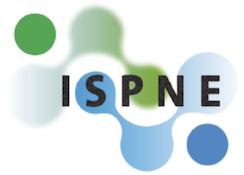 ISPNE is now accepting submissions for the 2025 Annual Conference. Please note that the deadline for symposium proposals is April 15th, 2025. And the deadline to submit individual abstracts is April 30th, 2025.*Note: Abstract portal is listed below first. To access the symposium portal, scroll past the abstract open call. Nola 2025 theme: Psychoneuroendocrinology at the Intersection of Science and Society: Navigating Bridges between Stress & HealthOur 2025 conference theme will give ISPNE the opportunity to bridge across the many intersecting disciplinary borders of psychoneuroendocrinology. The theme reflects that ISPNE stands at a crossroads where our interdisciplinary strengths can powerfully buttress neighboring disciplines through emphasizing preclinical work and its translation as well as by providing a scientific foundation for advocacy, policy, and public awareness. The 2025 ISPNE conference in New Orleans also embraces identity and intersectionality by hosting events that intend to help psychoneuroendocrinology forge pathways between science and society toward better health. Submissions that fit the 2025 theme are encouraged but not required. We look forward to seeing you in New Orleans, September 3-5th!
Call for Abstracts: Posters and Data BlitzISPNE is pleased to invite abstract submissions for the ISPNE 2025 Conference in New Orleans, LA on September 3-5, 2025 at the Ritz-Carlton Hotel. Important dates
Abstract Submission Guidelines
Abstract Submission Notifications and Award Decisions The Scientific Program Committee who evaluates abstract submissions are not provided with author information, bio/headshot, diversity statements, or award eligibility in order to ensure a fair and impartial review via single-blinded peer review. Notification about decisions for poster abstracts is sent on or about May 15, 2025 to permit sufficient time for travel decisions. Late breaking submissions will be accepted for rejected symposia entries; however, rejected posters will not be considered for late breaking submissions without extenuating circumstances (e.g., new data). Decisions about Awards and Accolades A select number of top-ranking abstracts will be considered for awards that provide an honorarium to offset travel costs to presenting authors. No separate application is needed.
Top-ranking abstracts will be considered for “data blitz” presentations which are formatted as 5 minute/5 slides flash talks. No separate application is needed. However, potential presenters should indicate consent to be considered for the data blitz format and, if selected, if they prefer to present during the blitz only or if an accompanying poster presentation is also of interest.Psychoneuroendocrinology publishes an annual supplemental volume for ISPNE conference abstracts. Submitted abstracts are automatically sent for consideration by the ISPNE review committee to the supplement volume, but authors can indicate preference to opt-out of consideration for the supplemental issue. The PNEC supplemental issue abstracts are citable but do not count as a scientific publication. As abstracts are not indexed by PMC or Scopus, publishing an abstract does not preclude peer-reviewed publication. Should authors wish to make minor edits to their abstracts, accepted and selected abstracts must be finalized no later than July 1, 2025 so the supplement can appear on or about the September 2025 issue.
2025 ISPNE Abstract Submission
Call for Symposia SubmissionsISPNE is pleased to invite symposia submissions for the ISPNE 2025 Conference in New Orleans, LA on September 3-5, 2025 at the Ritz-Carlton Hotel.Important Dates
Information about Symposia A symposium is a collection of scientific reports focused on a particular theme or subject. A symposium is scheduled for 75 minutes, typically including 15 minute presentations with sufficient time for Q&A and discussion. We also welcome proposals using innovative formats (debate style, hands-on demonstration or workshop) for which the same 75 minute format is available. A maximum of 5 speakers is allowed, with suggested formats being 4 speakers and a chair OR 3 speakers with a discussant and a chair. The symposium chair is expected to organize, invite, and confirm participation and attendance with proposal speakers. When a symposium chair is notified that the symposium proposal is accepted, individual presenters are requested to make an abstract submission regarding their research presentation following ISPNE guidelines. Each presenter, including chairs and discussants, must register for the conference; there are no fee waivers for presenters. The following content for symposium proposal submissions are encouraged, but not required:
Proposals that fit the 2025 theme
Feature both human and animal model research
Support diversity in science
Include representation from multiple countries.
ISPNE supports diversity in science, embracing an inclusive definition of diversity including but not limited to gender/sex, cultural or ethnic diversity, LMIC authors, disabilities, disadvantaged background. For symposia proposals, chair(s) should consider the collective balance of presenters, at a minimum, in terms of sex/gender. ISPNE especially encourages symposium proposals that involve early career scholars submitting proposals together with senior investigators to gain experience in organizing and co-chairing sessions as well as presenting their work alongside senior researchers in their field. A suggested format is to include two senior researchers and one trainee in a panel of presentations. Symposia Submission Guidelines
All symposium proposals should include:
An ISPNE symposium proposal is an established pathway for potential authors to propose invited reviews into the society’s journal. Psychoneuroendocrinology does not typically publish review articles unless invited, systematic, or meta-analytic. At the time of submission, symposium chairs are asked to indicate if they intend or would like to consider submitting a review article (or similar article) based on the ISPNE symposium as part of an “ISPNE special collection” series.
2025 Symposia Proposal Submission
|

